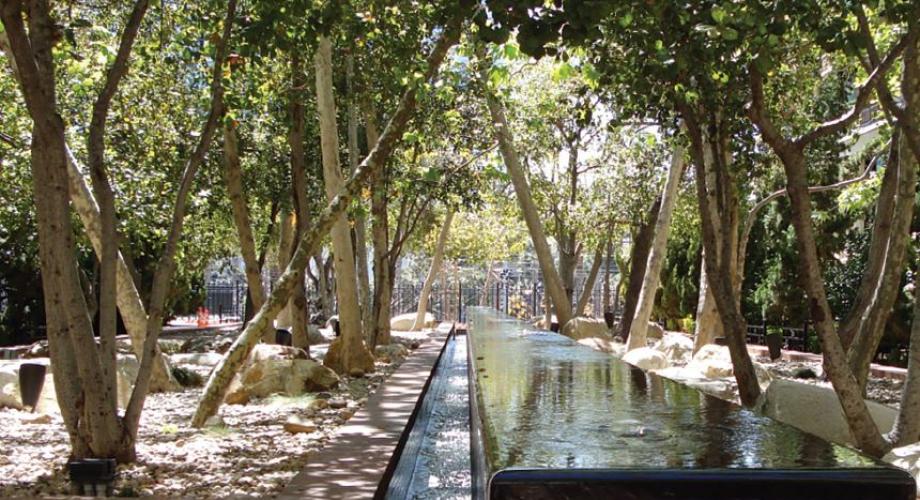When considering ways to spruce up the appearance of existing apartment buildings or achieve trendy, modern looks inside new communities, foliage remains a worthy option. Indoor plants have been a staple of décor for more than a century, but their popularity has only grown as society gains a better understanding of their benefits.
A well-designed interior takes into account how people will use the space. There are a variety of ways designers and architects can use plants to make building interiors more inviting.
Change Perception of the Space
In large, open spaces such as atriums and lobbies, adding potted plants can create a feeling of separate spaces without requiring walls or other permanent structures. Different container styles and shapes can be used to create this feeling of separation, along with plants of varying height, thickness and leaf shapes. In buildings with a more modern aesthetic, architects and designers frequently favor clean lines in both the plants, such as Sanseveria, and in their containers; in more traditional buildings, design tends to incorporate more lush plants, such as kentia palms, and classic container styles. Plants aren’t just something stuck in a corner; the combination of different plant and container styles allow designers to create artistic arrangements.
“We use different types of plants throughout the common areas to give each a different feel,” says Barbara Wilkinson, Community Manager from CityFront Terrace in San Diego. “For example, orchids work well in the lobby because they feel warm and welcoming.”
Create a Connection with Nature
Humans have an innate connection with nature – referred to as biophilia – that directly affects our happiness and wellbeing. It’s a big reason why many people enjoy hikes or walks on the beach. Exposure to nature decreases feelings of stress and eases anxiety. Incorporating plants into interior design provides an opportunity to bring that connection indoors.
Apartment buildings that feature biophilic design are appealing to young professionals, many of whom are more in tune with nature and concerned about the quality of life. This appeal is especially strong in the urban environments Millennials gravitate toward, where access to nature is limited. Biophilic design is also attractive to young families, whose children often lack exposure to nature in more urban settings.
“We use plants in the common areas of our building to mirror the beautiful exterior landscape,” Wilkinson says. “It creates a continuity that makes residents feel at home.”
Keep Things Fresh
Great design involves more than aesthetics—it also makes a space function better. Indoor plants not only make a space more beautiful, they can also improve air quality. The same process plants use to convert carbon dioxide into oxygen in nature applies to their presence inside a building. Plants absorb carbon dioxide, toxins and other gasses from the air, removing volatile organic compounds that can lead to asthma, nausea, respiratory illness and other chronic diseases.
“It’s important for us to maintain that feeling throughout the building,” Wilkinson says. “Especially for our residents in Southern California, who are accustomed to spending a lot of time outdoors.”
Diffuse Sound Naturally
In addition to plants’ effect on air quality, they also can help with sound absorption. While this use is typically secondary to their visual appeal, plants naturally absorb sound waves through their stems, branches and especially their leaves. Plants with larger leaves, such as dracaenas or fycus lyrata, are especially effective in their ability to cut down on noise. This is apparent most frequently when plants are used to reduce echoes in large, open rooms.
“Often people think about furniture and other upholstered surfaces when they want to cut down on echo in a room,” said Wilkinson, “but well-placed plants can do the same thing.”
Living Green Walls
Living green walls provide all the benefits of indoor plants without taking up any floor space. They provide large, lush areas of greenery and even help reduce energy costs, aiding in cooling indoor air in summer months and acting as added insulation in colder months. These are especially popular among eco-friendly properties, as they can help early LEED Credits from the U.S. Green Building Council.
Whether designing for a new community or renovating an older building, plants can make a major impact in interior design. When integrated smartly into spaces and maintained properly, they help attract residents from many walks of life.
Janice Nath is an Ambiance Architect and an award-winning expert in plantscaping and interior design for Ambius
